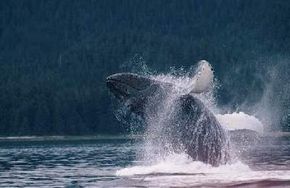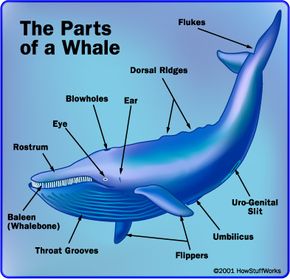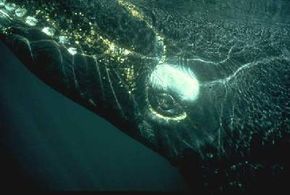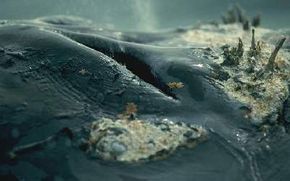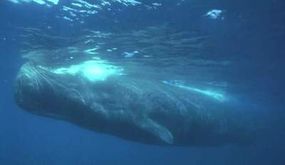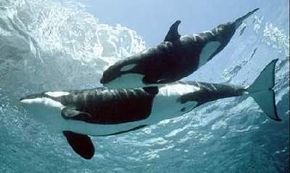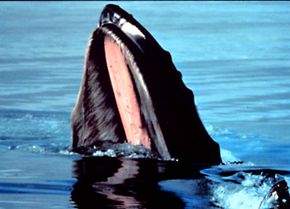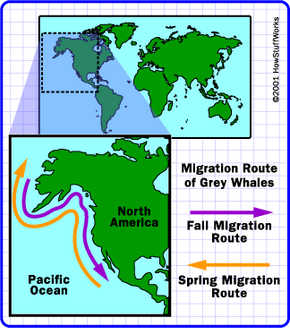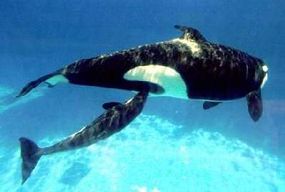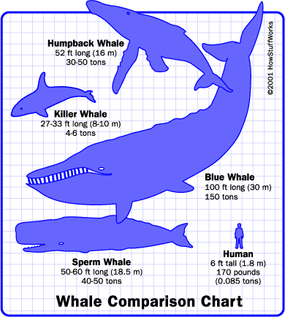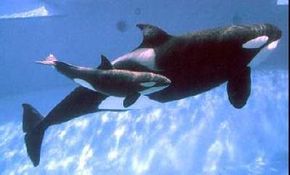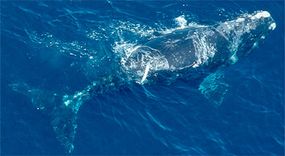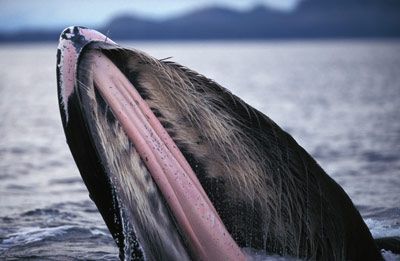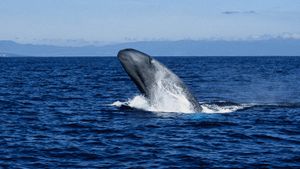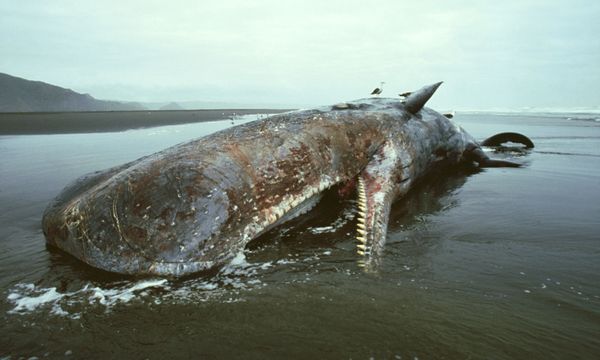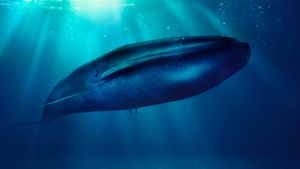In the world's great whale tales, including Herman Melville's "Moby Dick," the storytellers are preoccupied with one particular whale attribute: awesome size. Many whale species are staggeringly enormous. The blue whale, for example, can grow to 100 feet (30 m) long, about the height of a 10-story building, and can weigh as much as 150 tons (300,000 lb or 136077.7 kg). Its heart alone is the size of a small car, and there's enough room on its tongue for 50 people. It is the largest known animal in Earth's history.
But despite their monumental proportions, the most phenomenal thing about whales isn't how big they are: It's the way they live. Whales are mammals -- warm-blooded, air-breathing creatures -- but they spend their entire life in the ocean. In this article, we'll look at the remarkable adaptations that make this possible. We'll also explore the mysterious behavior of whales, and we'll investigate the history of commercial whaling and whale conservation.
Advertisement
Whales are mammals, just like us, and more than 50 million years ago, their ancestors walked on land as we do. It's not clear what these animals were like, but some paleontologists believe they may have been hoofed mammals, something like modern cows. Other paleontologists believe that whales were more like modern wolves. Over the course of millions of years, the ancient creatures spent more and more time in the water, living partly on land and partly in the sea, like modern sea lions or otters. Eventually, the creatures stopped climbing onto land altogether, and they slowly lost their now-useless legs and fur. The evidence for this hypothesis is fairly compelling: Paleontologists have even found fossilized whale-like creatures with legs so small that they couldn't possibly support the animal's weight.
Modern whales have wide tail flukes, extended flippers and, in some species, dorsal fins. Whales swim forward by flexing their tails up and down, instead of side to side as with most fish. To change direction, they move their flippers, similar to the way an airplane steers (read How Sharks Work for details). The dorsal fins, if present, serve to stabilize the whale's body as it swims.
Advertisement
